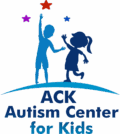Autism Strategies and Interventions-Autism Spectrum Disorder (ASD) is a neurodevelopmental condition characterized by challenges in social interaction, communication, and restricted or repetitive behaviors. While autism is a lifelong condition, individuals with ASD can benefit from a range of strategies and interventions that support their overall development and quality of life. In this comprehensive guide, we explore evidence-based strategies and interventions for autism, spanning various domains such as communication, social skills, behavior management, and academic success. By understanding and implementing these strategies, individuals with autism can thrive and reach their full potential.
I. Communication Strategies and Interventions :
- Augmentative and Alternative Communication (AAC): AAC systems, including picture communication systems, sign language, and speech-generating devices, can enhance communication skills and provide alternative ways for individuals with limited verbal abilities to express their thoughts and needs effectively.
- Social Stories™: Developed by Carol Gray, Social Stories™ are visual supports that provide individuals with autism with social cues and explanations of social situations. They help individuals understand social expectations and navigate social interactions successfully.
- Visual Supports: Visual supports, such as visual schedules, visual timers, and visual task lists, aid in organizing daily routines, improving transitions, and enhancing comprehension for individuals with autism. Visual supports provide concrete and predictable information, reducing anxiety and promoting independence.
- PECS (Picture Exchange Communication System): PECS is a structured communication approach that uses visual symbols to enable individuals with autism to initiate and engage in communicative exchanges. It helps develop functional communication skills by teaching individuals to exchange pictures for desired items or activities.
II. Autism Strategies and Interventions Social Skills Strategies and Interventions :
- Social Skills Training: Social skills training programs, often conducted in group settings, teach individuals with autism important social skills such as turn-taking, initiating conversations, and interpreting non-verbal cues. Role-playing, modeling, and video-based instruction are common components of social skills training.
- Social Thinking®: Developed by Michelle Garcia Winner, Social Thinking® is an approach that focuses on teaching individuals with autism the cognitive and social-emotional skills needed for successful social interactions. It helps individuals understand their own and others’ perspectives, emotions, and intentions.
- Peer-Mediated Interventions: Peer-mediated interventions involve training peers without disabilities to interact and support individuals with autism in social settings. This approach promotes inclusion, fosters friendships, and provides opportunities for social learning and engagement.
- Video Modeling: Video modeling utilizes videos to demonstrate appropriate social behaviors and skills. Individuals with autism observe the modeled behaviors and imitate them, helping them learn and generalize social skills in various contexts.
III. Autism Strategies and Interventions -Behavior Management Strategies and Interventions :
- Applied Behavior Analysis (ABA): ABA is a scientifically validated approach that focuses on understanding behavior and implementing strategies to improve socially significant behaviors and reduce challenging behaviors. ABA techniques include positive reinforcement, prompting, shaping, and functional behavior assessment.
- Positive Behavior Support (PBS): PBS is a proactive and individualized approach that focuses on preventing challenging behaviors by modifying the environment, teaching appropriate replacement behaviors, and using positive reinforcement. It aims to enhance the individual’s quality of life by promoting functional and socially appropriate behaviors.
- Structured Teaching: Structured teaching, often associated with the TEACCH (Treatment and Education of Autistic and Communication-related handicapped CHildren) approach, involves creating visual schedules, organizing physical environments, and breaking tasks into manageable steps. It provides predictability and reduces anxiety for individuals with autism, promoting independence and task completion.
- Self-Regulation Techniques: Self-regulation techniques, such as deep breathing exercises, sensory breaks, and visual cues, help

Discover more from Autism Services and therapy for Kids by counseling
Subscribe to get the latest posts sent to your email.

